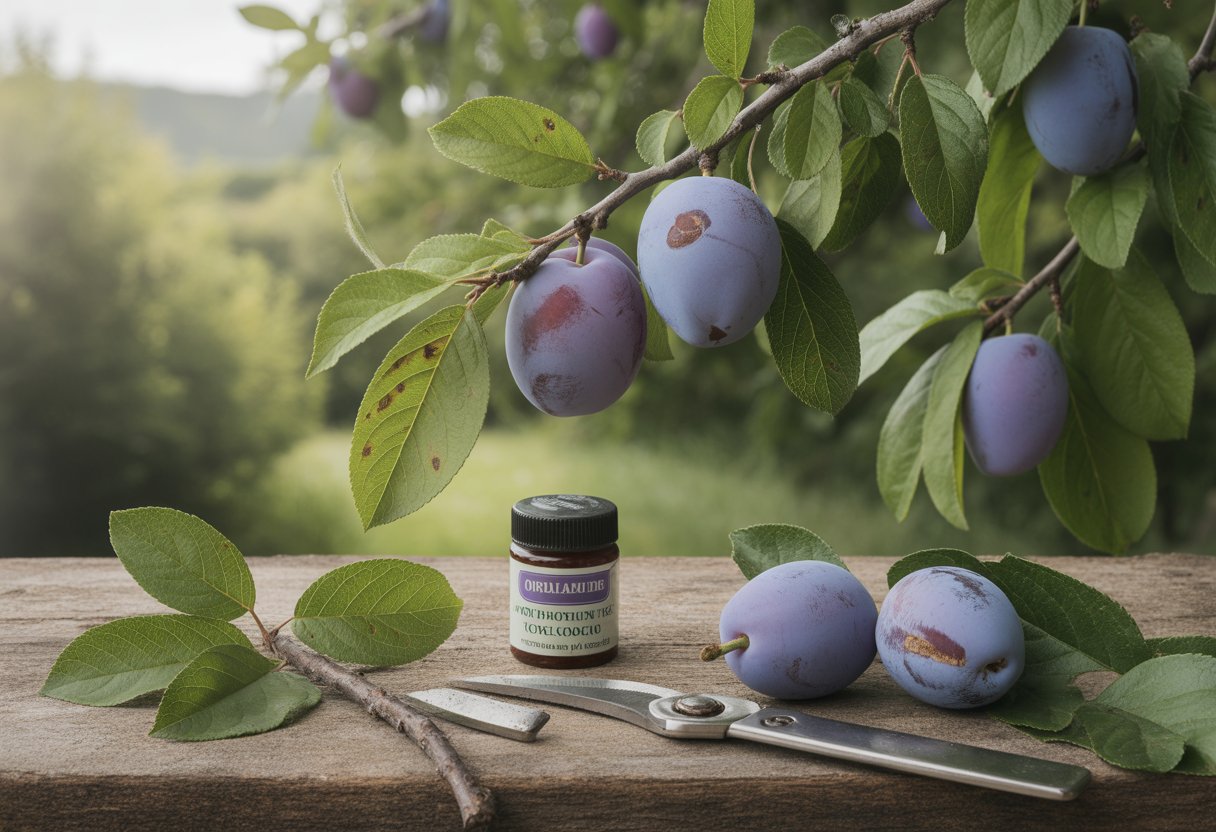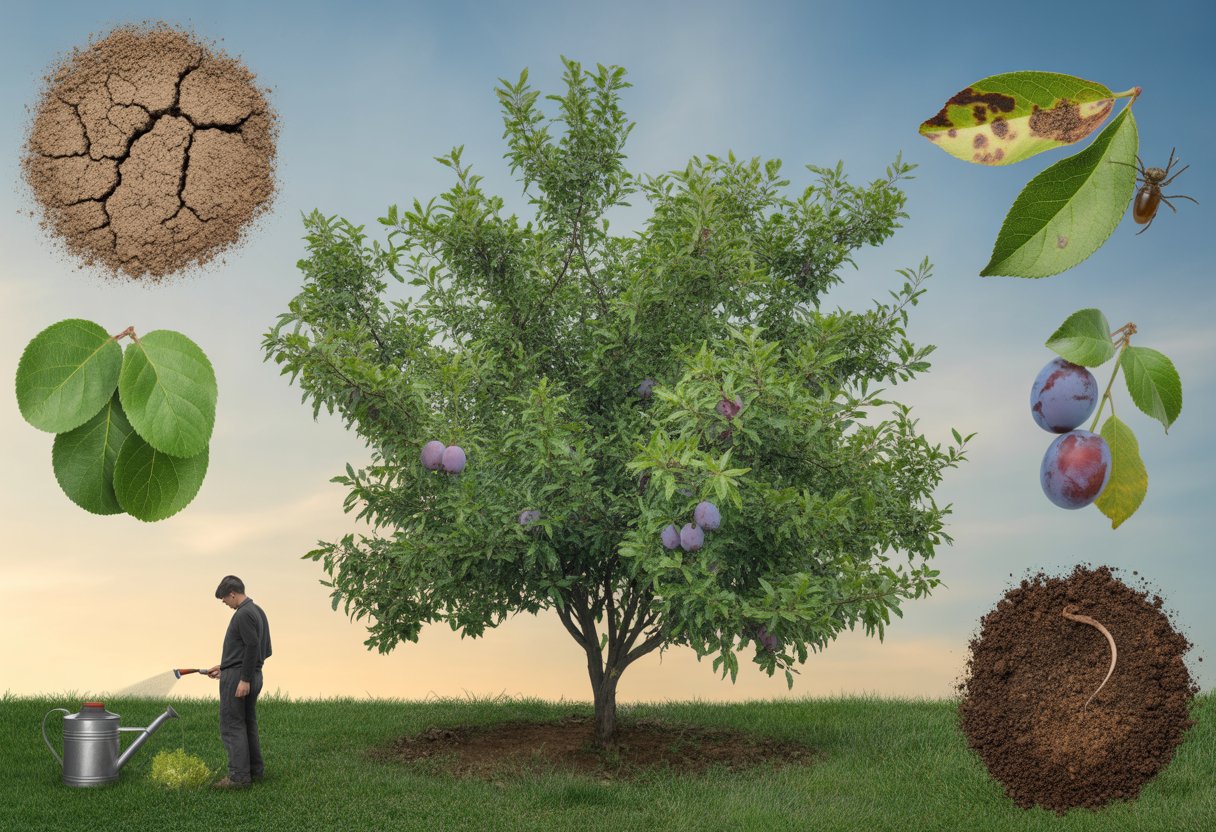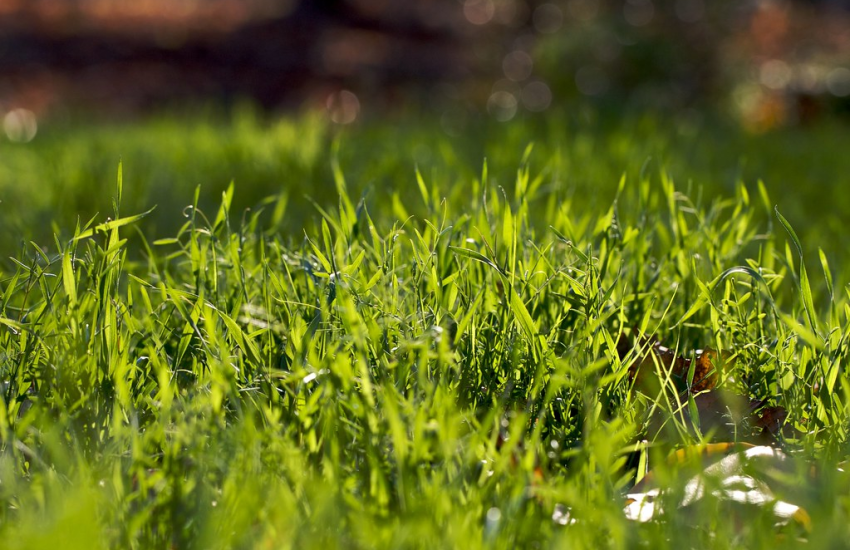Common Problems with Wild Plum and Solutions for Healthy Growth and Fruit Production
Wild plum trees run into all sorts of issues that can knock back their health and fruit production. Pests, diseases, and environmental stress? Yeah, those are the big three headaches for growers.

Insects like plum curculio and aphids just love wild plum. Fungal diseases—brown rot and leaf spot, for example—can mess up both the fruit and the leaves.
If you’re on top of things with timely treatments and solid growing habits, you’ll cut down these risks quite a bit.
Drought and poor soil conditions stack on more stress. Give your trees the right amount of water and keep that soil in decent shape, and you’ll see them bounce back.
Common Diseases Affecting Wild Plum Trees
Wild plum trees get hit by several specific diseases that can drag down their health and fruit. Spotting symptoms early and using the right controls really makes a difference.
Plum Pox Virus: Symptoms and Control
Plum pox virus (PPV) twists up fruit, mottles leaves, and stunts shoots. You’ll notice leaves with odd, pale rings or blotches.
Fruit from infected trees ripens weirdly and often ends up smaller than usual. Aphids and infected plant material spread PPV around, so it’s sneaky.
There’s no cure once a tree gets PPV. You’ve got to remove infected trees to keep it from spreading.
Start with certified virus-free stock if you can. Control aphids—either with insecticides or by encouraging natural predators. Full sun helps trees fend off secondary infections, but honestly, it won’t stop PPV.
Black Knot Management
Black knot, a fungal disease, forms hard, black galls on branches. These nasty lumps can choke off limbs and cut down your fruit yield.
Prune out affected branches while the tree’s dormant, making sure to cut 6-8 inches below any gall. Burn or trash the pruned bits so you don’t just spread spores around.
A well-timed fungicide in early spring can help keep new infections in check. Make sure your trees get plenty of sun and airflow to slow down the fungus.
Bacterial Spot Identification
Bacterial spot shows up as small, dark water-soaked lesions on leaves and fruit. You’ll often see yellow halos around the spots, and then the leaves start dropping.
This bacterium loves warm, wet weather. Skip the overhead watering—wet leaves make things worse.
Copper-based sprays work best if you start early or spray during rainy spells. Try to pick resistant varieties, and keep your trees pruned for good airflow.
Sunny spots dry leaves faster, which gives bacteria less of a chance.
Pest Infestations and Prevention Methods
Wild plums attract some persistent pests that chew up fruit and leaves. If you keep an eye out and act early, you can usually head off the worst of it.
Plum Curculio: Damage and Solutions
Plum curculio beetles lay eggs under the skin of fruit, leaving crescent-shaped scars. You’ll see fruit dropping before it’s ripe, and the quality tanks.
Spray insecticides during bloom and when fruit first starts forming. Baited traps help you keep tabs on beetle numbers.
Clean up debris under trees to mess up their overwintering plans. Pick off any infested fruit you spot—it slows down the next generation.
Check trees regularly in early summer. If you catch them early, you’ll save a lot of fruit.
Aphid Outbreaks in Wild Plum
Aphids crowd onto young shoots and leaves, sucking sap and leaving sticky honeydew behind. That honeydew attracts sooty mold, which is just another headache.
Lady beetles and lacewings go after aphids naturally, so encourage them if you can. If aphids get out of hand, insecticidal soaps or neem oil knock them back without hurting the good bugs.
Walk through your trees every week in spring and check for clusters. Prune out heavily infested areas to keep air moving and aphid numbers down.
Controlling Spider Mites
Spider mites show up in hot, dry spells and feed on leaf undersides, leaving yellow speckles and causing leaf drop. They multiply fast—blink and you might have a problem.
Keep things humid with regular watering or misting. For big outbreaks, use miticides that target spider mites.
If you can, encourage predatory mites—they eat the bad guys. Spraying leaves with water helps knock off mites and break up their webs.
Environmental Stress and Growth Challenges

Wild plums aren’t immune to tough weather or lousy soil. If you want healthy growth and fruit, you’ve got to play defense with sun, water, and soil care.
Full Sun Exposure Requirements
Wild plums need full sun—six hours or more every day. If you stick them in the shade, you’ll get fewer flowers and smaller fruit.
Shady spots make the trees grow tall and spindly. Full sun also dries leaves faster, which means less fungal trouble.
But too much heat without water can scorch leaves and stress the tree. Pick spots with steady sunlight and decent air movement for the best results.
Drought and Water Management
Wild plums handle drought okay once they’re established, but young trees and dry spells call for regular watering. If you slack off, you’ll see fruit drop, wilting, and slow growth.
Water deeply, but not too often—this pushes roots to grow deeper. Avoid spraying water over the leaves; it just encourages disease.
Mulch helps keep soil moist and cools things down. Keep an eye on soil moisture; too dry or soggy soil hurts roots and blocks nutrients.
Stick with a steady watering routine. It’s not rocket science, but it does keep wild plums chugging along.
Soil Quality Impact
Wild plums do best in well-drained soils with a pH between 5.5 and 6.5. If you’ve got heavy clay or soggy spots, roots can rot and just don’t get enough oxygen.
Soil loaded with organic matter really helps with nutrients and hanging onto moisture. It’s honestly smart to test your soil before you plant—sometimes it’s hiding issues that’ll stunt your trees.
Tossing in compost or aged manure can boost both texture and fertility. Just don’t go wild with nitrogen; too much, and you’ll end up with lots of leaves but not much fruit.


